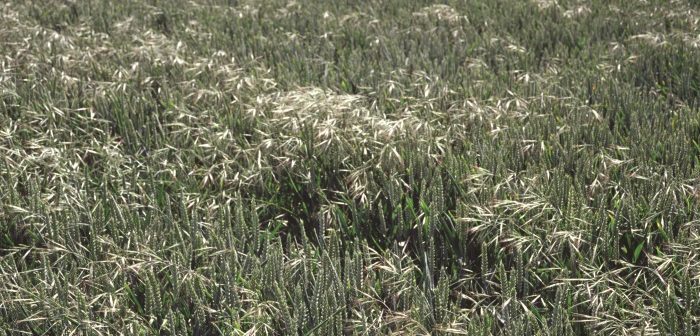ADAS announced last week that researchers had isolated six UK brome populations with changes in sensitivity to ALS-inhibiting herbicides. Although it is important to factor this information into decisions, manufacturer Bayer stresses that there are still a range of options for farmers to control brome in the field.
The research found 6 brome samples out of 60 which showed reduced sensitivity to Broadway Star (pyroxsulam + florasulam) and Pacifica Plus (mesosulfuron + iodosulfuron + amidosulfuron). One sample of meadow brome had target site resistance while, non-target site mechanisms, which is often called metabolic resistance, was present in three samples of sterile brome and one sample each of rye-brome and great brome.
The number of UK brome populations in which resistance to ALS-inhibitors has been detected and confirmed to date is relatively low, notes Roger Bradbury, Bayer’s market development manager for cereals in North Europe.
“But there is good reason to be vigilant. The samples were from geographically diverse locations meaning it is likely that resistance has evolved independently in these field populations. Growers can help limit further spread of resistance by using an integrated weed management strategy across the rotation to protect the chemistry available.”
As yet, other key herbicides for brome control are not known to be affected by resistance. Mr Bradbury expects that Roundup (glyphosate) pre-planting and Liberator (flufenacet + diflufenican) pre-emergence as well as ALS-inhibitors post-emergence will continue to be part of the solution for brome control.
“Within an integrated control strategy, maximising herbicide performance is critical to minimising resistance risk. There are four main factors farmers should keep in mind. Apply products at the correct timing and use the full label dose, focus on application quality to get best coverage of the target and finally make sure that application conditions favour herbicide performance such as during periods of active growth for post-emergence products,” says Mr Bradbury.
The first priority for an integrated control strategy is to manage overall population levels and take all opportunities to reduce numbers. The fewer individual plants in a field population to begin with, the less pressure control methods are put under. Growers are advised to be particularly vigilant of field margins where brome problems can start. Spraying off or cultivating headlands as soon as problems appear reduces seed return and prevents further spread.
Ahead of winter cereals, autumn cultivation strategy is important, but the correct approach depends on the particular brome species present. Assessment is easiest in June / July when seed heads are visible to plan for the autumn ahead. Mr Bradbury recommends farmers to look at AHDB and WRAG guidance as good resources are available to help with brome identification.
“Sterile and great brome seeds germinate in the dark, so cultivation as soon as practical after harvest will encourage germination as long as there is moisture. These seedlings can be sprayed off with a non-selective herbicide such as Roundup prior to establishing the next crop,” says Mr Bradbury.
“Meadow, rye and soft brome are later maturing and need light and warmth for the seeds to ripen. For these species, the shed seed should be left on the soil surface and any cultivations delayed for at least one month to reduce seed dormancy; a light cultivation can then be employed to create a stale seedbed and the emerged seedlings sprayed off with Roundup prior to establishing the next crop.”
Because brome is primarily autumn germinating, including more spring crops in the rotation is an effective management tool. In addition, non-cereal crops may have alternative chemistry available so growers can mix modes of action. Ploughing to a depth of 15cm to bury brome seed is also an effective control method.




